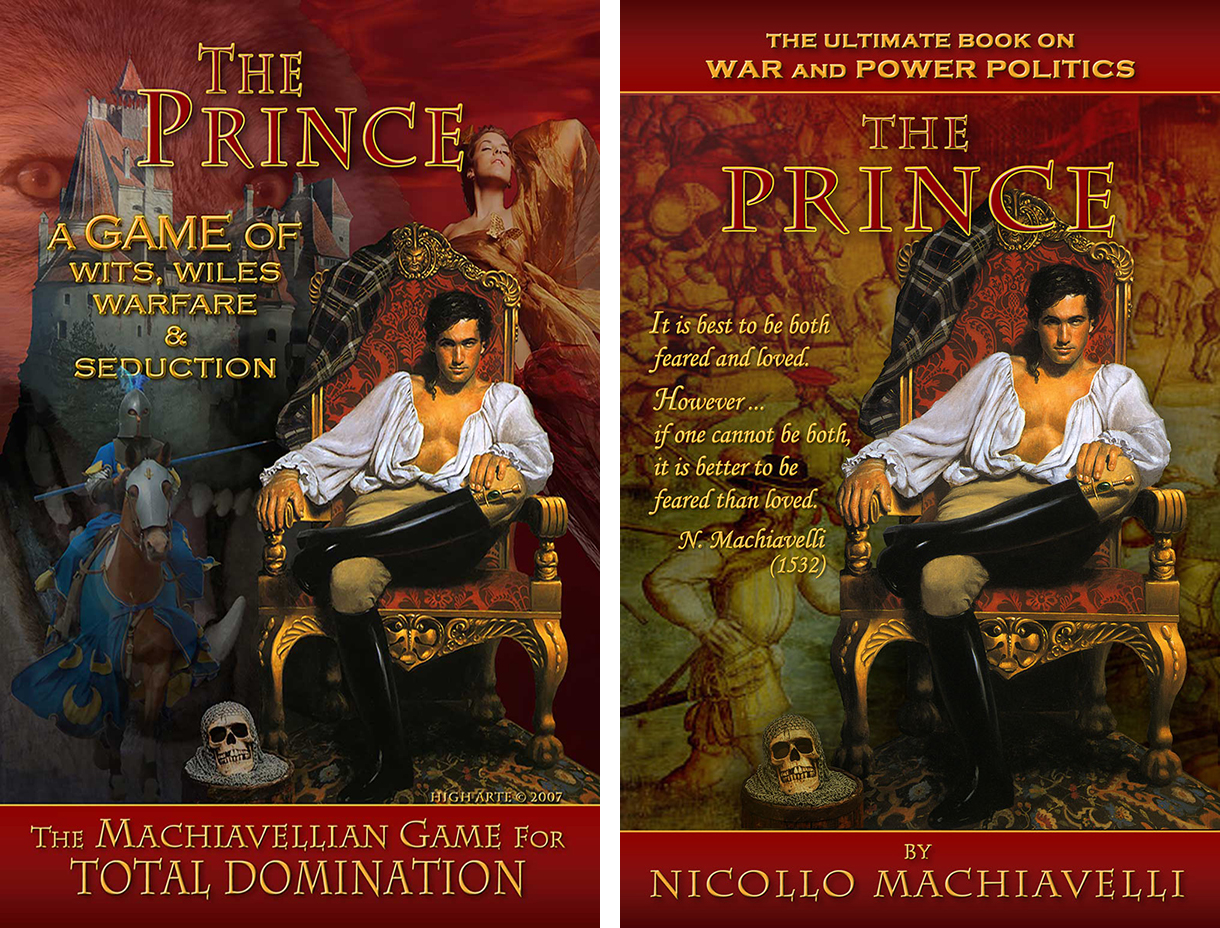Concept
High Arte was approached by a potential client interested in having a graphic design created that could be used as the basis for the cover of a book jacket and the cover of a video game. The client was considering publishing a new translation of Niccolò Machiavelli’s The Prince along with creating a video game that would be based on Machiavelli’s point of view of war and power politics.
The book and the game were to be sold separately and together with the launch introducing them simultaneously. I suggested that the design have the same primary elements: size, color, type face and principal image but articulated in a way that clearly defined each one. I also recommended that they be packaged back to back as bookends, which would highlight the novelty of a book and a game being sold together.
Given my suggestions and the elements submitted on the idea board, High Arte became the project’s designer.
Background
Niccolò di Bernardo dei Machiavelli was an Italian Renaissance diplomat, philosopher and writer, best known for The Prince (Il Principe), written in 1513. Often called the father of modern political philosophy and political science, Machiavelli considered political battles, not through a lens of morality, but as though they were a board game with established rules. His experience showed him that politics has always been played with deception, treachery and crime. The Prince was much read as a manuscript long before it was published in 1532 and the reaction was mixed. Some considered it a straightforward description of “the evil means used by bad rulers”; others read in it “evil recommendations to tyrants to help them maintain their power.” ––Wikipedia
Design
The Prince: The design process began with the decision to personafy the “Prince” as a man that would appear on both the book jacket and the game cover. After reviewing multiple illustrations of potential princes, it was decided that the image should not be tied to a particular period either in looks or in dress. The illustration of a dark haired, handsome, intalianate-appearing young man was selected. He lounges, leaning back, legs crossed in an ornate gold-painted, throne-like chair staring at the viewer. His sultry look. open shirt, muscular chest and ridding booths might suggest the cover of a romance novel and, to some extent, that’s exactly what was wanted. He became Machiavelli’s prince––for whom he wrote the book.
The Look: The color of the gold chair’s upholstery — dark burgundy red — became the signature design color. It served as the background overlay for the Renaissance tapestry used on the book’s cover, over the wolf, castle and back-arching damsel appearing on the game’s cover. It appears behind the names and descriptions on both covers; and it, along with gold, became the colors of the title font. In addition, a knight on horseback is seen charging the back of the Prince on the Game cover and on both covers a skull wrapped in chainmail rests at the foot of the Prince.
The Copy: “The Ultimate Book on War and Power Politics” became the tag for the book along with a Machiavellian quote, ” It is best to be both feared and loved. However, if one cannot be both, it is better to be feared than loved.” For the game, “The Machiavellian Game for Total Domination” became the game’s subtitle and “A Game of Wits, Wiles, Warfare & Seduction” the descriptive tag.
The Result: The two covers visually define their contents, indicating they have the same source but are distinct in what they convey. They will serve as unique bookends when marketed together but clearly and powerfully stand alone when sold separately.

